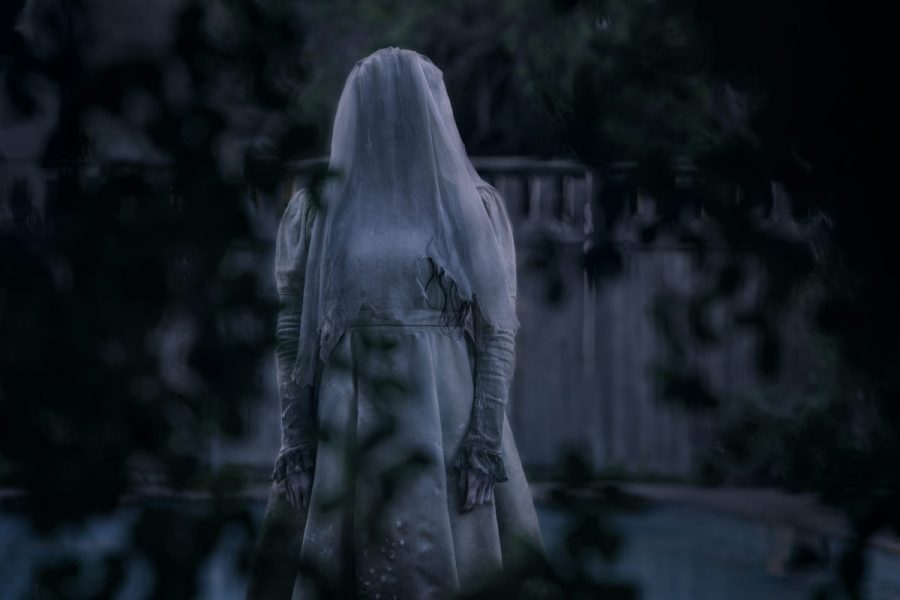Growing up in a Mexican home, my mom would use various folktales, such as La Llorona to keep me in check. Even as a teenager, if I wanted to go out at night, she would warn me to get home early, otherwise “La Llorona is going to drag from your bed at night.” With the immigration of her people like my mom, to the US, the folklore figure has made its way across the border. Most recently, she resurfaced on the big screen in the latest cinematic addition to the universe of “The Conjuring” – “The Curse of La Llorona.”
The version of the story that I grew up with was that of a woman who was neglected by her husband. She marries a wealthy man, with the dream of a luxurious lifestyle. After giving birth to their children, her husband no longer saw beauty in her and left her for another woman. Overtaken by anger and grief, she drowns her children in a river as an attempt to get her husband to love her again. In the end, she is left alone, meets the same fate as her children, and is cursed to walk the earth for eternity. This is something I expected to see but was only teased.
The full story of La Llorona, or the Weeping Woman, varies from person to person as it was orally passed down from generation to generation. However, one thing is for certain — the folktale is a warning to children to behave and be home before nightfall, lest they disappear into the dark.
With today’s pressure for the media to be politically correct, one question arises: Does “The Curse of La Llorona” do justice to the folktale that all Latinx communities share? Long story short, no, it doesn’t. Where did it do wrong? Well, it started to go wrong after Velma forgot that holy water is a thing.
To further explain why this film did not do this folktale justice, we must look at the main star, La Llorona. Those who say they’ve encountered her claim they are not branded physically, but mentally. When she is near, her weeping can be heard, hence her name. Her iconic phrase from her folktale “Ay, mis hijos,” was replaced with a lullaby that my grandma would use to put me to sleep as a child. The lullaby did have the same eerie effect, but La Llorona didn’t go around putting children to sleep. The lack of this iconic phrase stopped La Llorona from becoming a solidified character in the film. She could’ve been replaced with any other horror figure and the film still would’ve worked out.
La Llorona’s appearance and actions clearly show that there was a lack of research during the film’s production. Her tale is used to make children behave, but most importantly, to make them stop roaming the streets late at night. In the film, La Llorona suddenly makes appearances during broad daylight, not adding anything to the plot, but only adding a jump scare to remind the audience that the movie is, in fact, a horror film despite its slow progression.
Another thing that the film got wrong about La Llorona (spoiler alert) was her attachment to the family that the film follows. Although La Llorona is a spirit, she is not the kind that attaches itself to people. Instead, she is attached to bodies of water, something the film actually got right -then the film went wrong again when it made it seem as if La Llorona had a suggestion box on for who to haunt when treated as a deity. Again, she is a spirit, not a deity.
The movie didn’t only go wrong with its main star. It also went wrong with its cast and their roles. Since the folktale is mostly known as Mexican in the U.S., I expected to see Mexican or Mexican American actors. In this case, there were some, if not only three cast members who were Mexican or of Latinx descent. The film only teased us with scattered and butchered Spanish phrases and some actual Spanish here and there. The film was not only culturally wrong with this classic folktale, but also with its cultural representation with its cast. The two characters I found to be problematic were that of Anna Garcia and Rafael Olvera.
The character Garcia is a social worker portrayed by Linda Cardellini, who is better known for her role as Velma in the 2002 film “Scooby Doo.” The reason she came on as problematic was her connection (or lack thereof) to La Llorona. The reason behind her connection was very vague, the only brief explanation that was given was that her husband was Mexican and that the film is set in L.A., which was once part of Mexico. Unlike Anna, Rafael — a curandero, or healer — has a clear connection with La Llorona. His character was wrong in various ways. Although curanderos are very traditional in Mexico, many go to a priest when dealing with a spirit. This was something that was seen in the film but was later dismissed.
I will give them that they were fighting off an angry spirit, so I understand why they went to a curandero instead. The methods of curanderos also vary upon who you talk to in Mexico, but the film’s depiction was off. Sadly, holy water did not make an appearance until the end. I almost expected Garcia to dress up as Velma and say broken in Spanish, “Jinkies, we forgot the agua bendita. We forgot the holy water.”
Overall, the film is a perfect example of a failed attempt of representation on the big screen. It had some potential, but the lack of research cannot be ignored. This film missed the chance to be an iconic representation of the Latinx community. The fear of it not being accepted by the American audience cannot be used as an excuse. With research and effort, we get films like Disney’s “Coco,” “Black Panther,” and “Crazy Rich Asians.” These films were well received and became icons for their respective cultures. Something that could’ve been achieved by this film, but exchanged this success for quick cash and jump scares.




